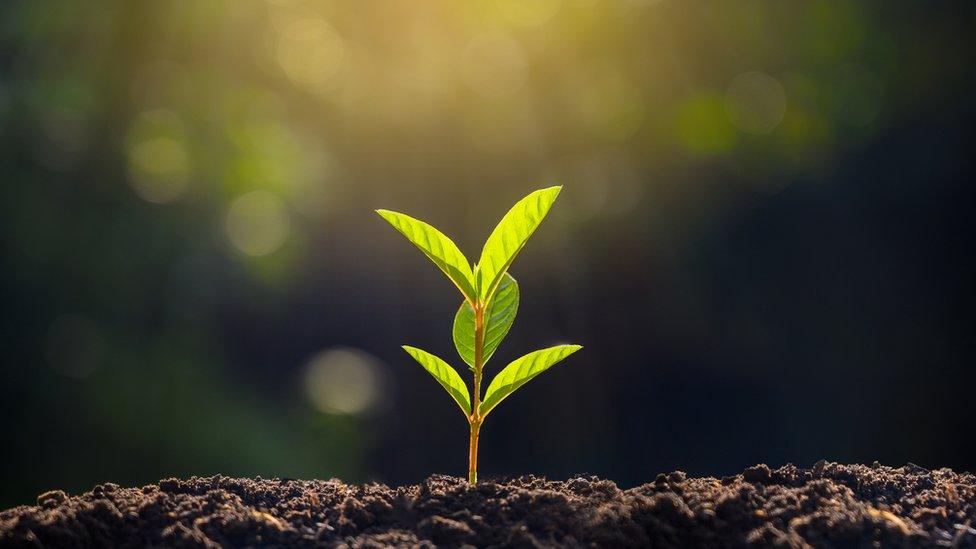Climate change: New tests to see how carbon dioxide can be removed from the air
- Published
- comments

Could planting lots of the right trees help the UK hit zero carbon emissions?
New studies are being run to see how well trees, peatlands, rock chips and charcoal can be used to suck carbon dioxide (CO2) from the air.
The 拢30 million government-funded project will be ran across the UK and will see large plots of land used to fight climate change.
It's hoped that these efforts will help the UK meet their goal of zero emissions.
The size of the study makes it one of the biggest trials in the world.
What is the trial and how will it work?
The UK has set a target to net zero carbon emissions which would involved big changes to the way we live our lives, how we heat our homes and how we manage the emissions we do produce.
This new study aims to test out would involve large areas of land being dedicated to removing rid of carbon dioxide (CO2) from the air.
It has five main methods which it will try to test out.
1. Peatlands
This is a peatland in Scotland
Part of the study will use peatlands which are areas of land made up of peat. Peat is a type of soil made of dead plants that have not completely rotted, usually formed on wet not well drained ground.
These peatlands will be re-wetted and replanted in the Pennines and west Wales.
A restored peatland could absorb up to 10 tonnes of CO2 a year.
It's also hoped that renewing peatland will also help wildlife, flood prevention and water quality.
2. Tree planting
Trees are one of the best-known ways to draw carbon dioxide out of the atmosphere but alone they won't be enough
Large scale tree planting schemes to capture carbon will be examined across the UK, including on Ministry of Defence and National Trust land.
"Trees represent the most cost-effective way of removing CO2 from the atmosphere, while also delivering benefits such as enhancing biodiversity and recreational and health improvements," said Prof Ian Bateman, at the University of Exeter, who is leading these trials.
He warned however that the right trees have to be planted in the right places for this to work and the study will help figure out which trees and which places will be best.
3. Energy crops
A farmer inspects his crop of Miscanthus being grown for biofuel
Energy crops will also be tested - plants such as willow and miscanthus grass will be burned for energy with the CO2 emissions trapped and stored underground.
They could provide energy to power stations and could even remove CO2 from the air if the gas is captured and stored underground.
The study will see what the best varieties and planting methods are and assess how much carbon will be stored in the plants' roots.
4. Biochar
This is what biochar looks like
The trial will be the most comprehensive biochar trial to date and will add 200 tonnes of it to fields and grasslands.
The charcoal-like material is produced from wood or organic waste.
About 10 tonnes of biochar per hectare would be added to fields, but five times that could be buried underground.
Biochar increases the ability of soil to hold water and nutrients.
5. Rock chips
The Giant's Causeway in County Antrim in Northern Ireland is made from pillars of basalt
Special rock chips that absorb CO2 as they break down will be tested in Devon.
Spreading basalt chips on fields will be trialled on farmed land and areas used by grazing animals.
Basalt is a fine rock created from rapidly-cooled volcanic lava rich in magnesium and iron.
Chemical reactions that degrade the rock lock in CO2 and in worn out soils, the rock chips can also help replenish essential plant nutrients
- Published22 April 2021
- Published20 January 2020
